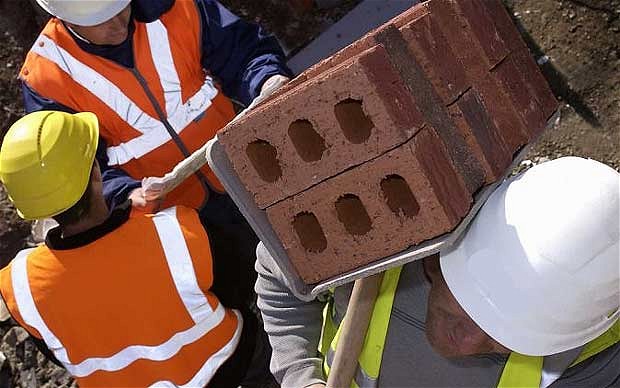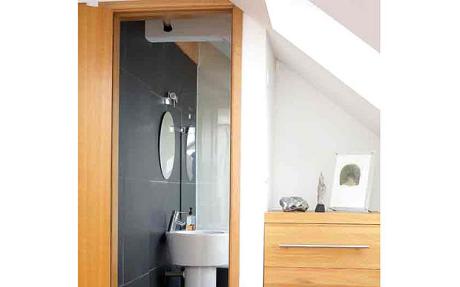Property Development Extensions
05-19-2017
PropertyInvesting.net team
In this Newsletter we give some practical advice on how to build an extension to your existing property and some of the planning regulations and pitfalls.
 Add Value Through Extension: Firstly, one of the best ways of adding value to properties is to extend them. This is particularly true the more expensive the property is per square metre. For instance, adding another bedroom in Kensington London can add £400,000 in value, whilst adding a bedroom in Fulham £150,000 and adding a bedroom in Manchester around £50,000. It very much depends on where you live whether you will add value or not, because the key is to build at far less cost than the value of the extra room – also acknowledging the value being destroyed by losing part of your garden or yard. This latter issue can be mitigated by having a raised roof terrace, albeit a roof terrace may need planning permission to reduce the building risks completely.
Add Value Through Extension: Firstly, one of the best ways of adding value to properties is to extend them. This is particularly true the more expensive the property is per square metre. For instance, adding another bedroom in Kensington London can add £400,000 in value, whilst adding a bedroom in Fulham £150,000 and adding a bedroom in Manchester around £50,000. It very much depends on where you live whether you will add value or not, because the key is to build at far less cost than the value of the extra room – also acknowledging the value being destroyed by losing part of your garden or yard. This latter issue can be mitigated by having a raised roof terrace, albeit a roof terrace may need planning permission to reduce the building risks completely.
Permitted Development: You may not realise it but there is something called “Permitted Development” – which means that you can build a 3m long extension out of the back of a terrace property – under most circumstances – without applying for planning permission or notifying the planning authorities. The government are trying to encourage small developments to easy the housing crisis. If you live in a detached property, you can extend by 4m – though you may need to get the okay from your neighbours for this extra metre length. For all the details, go to the government planning portal and download the guidelines for permitted developments – ready them thoroughly.
Terrace Houses – 3m long extensions at the back: If you live in a terrace house, and you are building an extension along a boundary – which would be normal to one side of the terrace property’s land, then you will definitely need to consult and agree with your neighbour. You will have to show at least some informal plans, and preferably some more formal drawings. This is wall will be called a “party wall” and they may or may not wish to go ahead and sign a formal “party wall agreement”. This is good practice particularly if you are shortly to sell the property and the buyer will ask for documentation to prove there was an agreement to the extension and the wall is shared or a “party wall”. It is critical that this party wall properly straddles the land-boundary line – and no one side can argue that they have lost land. A surveyor may be required – or may be advised – if you do not think the mid-point is clear – or you think there is any reasonable chance of having a disagreement with your “party wall” neighbour during the building phase.
Negotiation: Of course any development requires negotiation – and it’s important that the neighbour does not see your wall as a “threat” to their interests – rather an “opportunity”. You should couch the proposal as – “I would like to help you by building half your wall for no cost – that you can then use in the future to build an extension your side of the wall”. If your extension moves out – and sets a precedent for your neighbourhood – they can then follow suite and add value themselves with you taking on more of the risk and cost up front being the “first mover”.

Party Walls: For the person you are having a party wall agreement with, its important you allow them to check out the work as it proceeds – because the last think you want is a disagreement after it has been built – you need some time to make sure he/she is bought into it – otherwise the chance of a legal dispute rises. It’s also very important that the mid point of the wall can be property “marked out” and both sides agree before building commences.
Nimbys: One of the key threats to any development is Nimbys “Not In My Back Yard” people. It’s a judgement call about whether you should be totally open and advise all neighbours of the work about to go ahead – of course many of them will say to you that you need planning permission – then you get into an argument straight away – because it is a permitted development. You could offer to fix some of their building property problems – like put in a small damp course, build a shed or a wall – to appease them, but another strategy is to not advertise and advise the whole neighbourhood because they are highly likely to group up together - gang up against you. NImbys use bully behaviours and its best to avoid getting involved with such people – it might be better to plead forgiveness or just stand your ground and repeat “yes I have permission, it is a permitted development”.
Some practical things that can definitely help during the building:
Working Hours: Only work between 9.15 am and 4.45pm – office hours – most people are working away from home and you wont therefore create any disruption – people might not even notice you are building.
Wooden Box: Start with building a wooden box over the area to be extended – then paint grey or green – so you can build within the box – to provide protection against nosey people, photos-videos and noise disruption of course.
Rubbish: Try and avoid leaving builders rubbish in your front garden, back garden or on the street – the neighbours will hate this and want to complain – it’s better to stack rubbish in a room and take it out in one short trip – to prevent raising neighbours hackles. In any case, any rubbish in your front garden is likely to get a fine from the council – then this could trigger a visit from the building regulator and/or the planning authority – and then you are justifying every aspect of the permitted development – don’t embarrassed them! Keep out of their way.
Compliance: Always build in compliance with building regulations – ideally you should invite the building regulator to check the work that is taking place – and have given to you by the bulding regulator a certificate of approval at the end of the project – particularly if you are thinking of selling the property shortly after (retrospective building regulations approval can be sought, though this can be problematic and taking plenty of photos about how the building was constructed, depth of foundations, specifications, joints thickness etc is important – particularly if you want the option of applying for retrospective building regulations approval certification after its built.
Reputable Builder: Make sure you use a reputable builder that will follow the building regulations – the  last thing you need or want is to build an extension that then needs to be demolished because the building regulator condemns it at a later date. We heard of someone locally that after receiving planning permission to built two gigantic houses on a large plot, whilst they lived in a caravan for 3 years, using their life savings, and were 80% complete ready to sell them both at a massive profit, before the Building Regulator turned up (not invited by the rouge builder) and subsequently condemned both properties – the wooden frames, window and foundations were not to building regulations! The person is now bankrupt in a legal dispute and the builder ran off quickly and said it was all the owners fault! The message is – if you make sure your builder is building to regulations – then you don’t have much to worry about even if you don’t invite the building regulator around. To find a reputable builder can be a challenge – you really need a few written and/or verbal references from customers that have used the builder – unless you have a regular builder that you know and trust. If you employ and architect – this is expensive but they will also be able to check on the building work and whether they think it complies with building regulations. If you get gemmed up on the regulations yourself, you may also be able to spot non compliance and challenge the builder. Or you may just want to invite the building regulator around after building 20% to check on things – if you are really unsure of your builder. Remember, the buck stops normally at the contracting party – e.g. yourself as owner of the property. You need to tread carefully to make sure you are not left hanging high and dry by a rouge builder, neighbour or Nimbys. It’s important to make sure your key neighbours abutting the extension are supportive and your builder is good with communicating to the other neighbours during the building project – to take the pressure off as some Nimbys will no doubt want to get involved – humans are nosey and this is what all building projects create – nosiness.
last thing you need or want is to build an extension that then needs to be demolished because the building regulator condemns it at a later date. We heard of someone locally that after receiving planning permission to built two gigantic houses on a large plot, whilst they lived in a caravan for 3 years, using their life savings, and were 80% complete ready to sell them both at a massive profit, before the Building Regulator turned up (not invited by the rouge builder) and subsequently condemned both properties – the wooden frames, window and foundations were not to building regulations! The person is now bankrupt in a legal dispute and the builder ran off quickly and said it was all the owners fault! The message is – if you make sure your builder is building to regulations – then you don’t have much to worry about even if you don’t invite the building regulator around. To find a reputable builder can be a challenge – you really need a few written and/or verbal references from customers that have used the builder – unless you have a regular builder that you know and trust. If you employ and architect – this is expensive but they will also be able to check on the building work and whether they think it complies with building regulations. If you get gemmed up on the regulations yourself, you may also be able to spot non compliance and challenge the builder. Or you may just want to invite the building regulator around after building 20% to check on things – if you are really unsure of your builder. Remember, the buck stops normally at the contracting party – e.g. yourself as owner of the property. You need to tread carefully to make sure you are not left hanging high and dry by a rouge builder, neighbour or Nimbys. It’s important to make sure your key neighbours abutting the extension are supportive and your builder is good with communicating to the other neighbours during the building project – to take the pressure off as some Nimbys will no doubt want to get involved – humans are nosey and this is what all building projects create – nosiness.
Loft Conversions: These will only require planning permission if the loft is: 1) built into a separate flat and hence the property can be deemed an HMO – hence fire regulations are tightened 2) is significantly alter  externally – particularly if you are the only one in your street with such a modification. If everyone is building flat back to the roof in a terrace block, you probably wont need planning permission – this would be a permitted development. One of the most important things about loft conversions are the planning regulations. For instance, in many circumstances spiral staircases are not compliance because they are not wide enough and are thought to represent a fire hazard – particularly they have not fire door at the top of the stairs. Its also most important to make sure the supporting beams are strengthened and enough thick timbers are installed to take the extra weight. Many newer roofs have multiple thin wood joist that make conversion very problematical – older Victorian properties tend to have more open joist – bigger-stronger timbers and uprights. Its important that any modifications are in accordance with building regulation and the joints can of course easily support the roof-slates-tiles. If the building regulator thinks string timbers are needed at a later date – it would spell disaster. It’s worth having them involve from the start albeit this will increase costs and create another layer of bureaucracy – not having the building regulator involved may reduce costs by 30% (time-efficiency etc) but you should only do this if you are very knowledgeable and have a builder you know well and trust fully to do a job that matches or exceeds the building regulations – so if you do come around one day, you have nothing to worry about.
externally – particularly if you are the only one in your street with such a modification. If everyone is building flat back to the roof in a terrace block, you probably wont need planning permission – this would be a permitted development. One of the most important things about loft conversions are the planning regulations. For instance, in many circumstances spiral staircases are not compliance because they are not wide enough and are thought to represent a fire hazard – particularly they have not fire door at the top of the stairs. Its also most important to make sure the supporting beams are strengthened and enough thick timbers are installed to take the extra weight. Many newer roofs have multiple thin wood joist that make conversion very problematical – older Victorian properties tend to have more open joist – bigger-stronger timbers and uprights. Its important that any modifications are in accordance with building regulation and the joints can of course easily support the roof-slates-tiles. If the building regulator thinks string timbers are needed at a later date – it would spell disaster. It’s worth having them involve from the start albeit this will increase costs and create another layer of bureaucracy – not having the building regulator involved may reduce costs by 30% (time-efficiency etc) but you should only do this if you are very knowledgeable and have a builder you know well and trust fully to do a job that matches or exceeds the building regulations – so if you do come around one day, you have nothing to worry about.
Size of Loft: Of course its important to make sure you measure the size of the loft area – but take into consideration that the joints might need raising, you need to flat a floor, then cover the timbers with plaster board, plaster and paint – then put in a horizontal roof – then you need to make sure the roof is at least 2.1m high otherwise you do not comply with building regulations. Many roofs do not have a steep enough pitch and/or a wide enough breadth to make a loft conversion worthwhile – some criteria to consider:
• Is roof higher than 2.5m
• Is wide - wider than 4m
• Is the length at least 4m
• Are the roof supporting joists open with only a small number of large joints
• Are house prices will above the national average in your area
• Is your property “not” in a conservation area
• Can a property staircase (not spiral) be installed that does not take away a room downstairs - e.g. can an existing hallway be used for the stairs
If all the answers are “yes” then it’s quite a high chance the loft can be converted economically – to add value. For instance, a 5m x 5m roof will normally get you a 4m x 4m room – with a 2.3m high ceiling that might be 2m wide at the top – allowing no requirement for a dormer window and just simple low cost sky-lights. If you live in London or an expensive town-city, then its highly likely that an back facing up-right roof extension with some double doors and a balcony railing would add a lot more value and open the loft out. If you have a space of around 5m x 5m usable space, then its possible to convert such a space into a proper studio flat – with kitchenette, shower room, WC and living-bedroom area (e.g. using a Murphy bed). This could be worth £300,000 if you live in Islington of Fulham for example, and only cost £100,000 to convert. But don’t try this if you live in Bury, because it will cost £80,000 and add only £30,000 in value – and hence make a loss of £50,000 – not a good investment!
We hope this Special Report has been helpful for you for your investment strategies. If you have an comments or queries please contact us on

